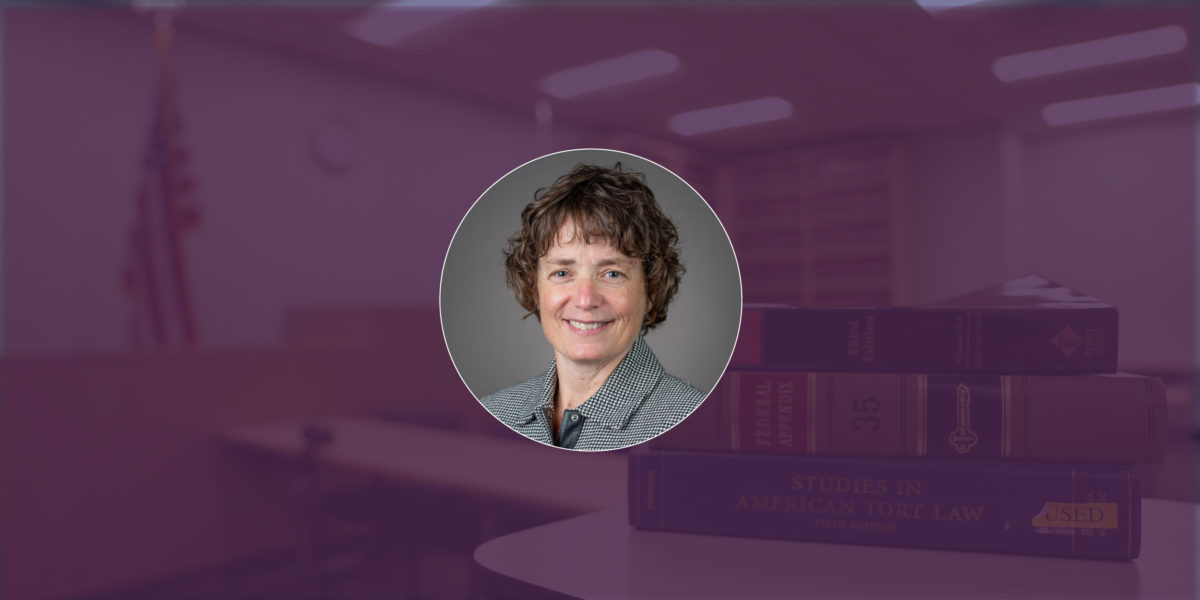Jackie Gardina, J.D., dean and chief academic officer at The Colleges of Law, discusses how higher education can adapt to support student success.
There is no doubt higher education needs to reimagine how it approaches teaching and learning. What is less recognized or accepted is that it also needs to reimagine the organizational structure needed to support student success. Over the last two decades, there have been urgent calls for higher education to redesign the content and delivery of its curriculum to respond to the needs of students and the 21st century economy. While much of the discussion has centered around the transformative potential of technology, Clay Shirky diagnosed the issues in higher education differently, saying, “The biggest threat those of us working in colleges and universities face isn’t video lectures or online tests. It’s the fact that we live in institutions perfectly adapted to an environment that no longer exists” (Shirky, 2014). Ted Mitchell, president of the American Council of Education, echoed Shirky’s diagnosis when he wrote “[a] defining challenge for colleges and universities today is the fundamental mismatch in higher education between the historical structures of our institutions and today’s students” (Soarse and Choitz, 2019, p. vii).
What Shirky and Mitchell both identified is, in part, a mismatch between an undergraduate curriculum designed to meet the needs of an industrial economy and the curriculum necessary to meet the needs of a rapidly evolving knowledge economy (Selingo, 2013). The knowledge economy is less reliant on the production process and more reliant on intellectual capital (Powell and Snellman, 2004). It requires individuals to adapt to a work environment that evolves with the introduction of new technology and new information (Closing America’s Skills Gap, 2014). In addition to core foundational knowledge, employers need individuals who can think critically, solve complex problems, analyze data, work within teams, and communicate effectively (Closing America’s Skills Gap, 2014).
Unfortunately, business leaders report that postsecondary graduates lack the requisite skills. In one report, a “significant number of college graduates” lacked “the ability to use basic math, communicate effectively, read technical manuals, work successfully in teams, and engage in complex problem-solving (A Work in Progress, 2017). In 2019, nearly two-thirds of business leaders disagreed with the statement “higher education institutions in this country are graduating students with the skills and competencies that my business needs” (Wilkie, 2019).
The skills gap mismatch is coupled with a mismatch between the curricular design and the current student population. College students are no longer 18 years old, studying full time and finishing a degree within four years. The majority of college students today are older, attempting to balance work, family, and school, and seeking an education linked directly to employment. Given their responsibilities, many of these students are attending school part time (NCES, 2021), extending the time to completion, or interrupting degree completion entirely (Bombardieri, 2017).
The inability of higher education institutions to meet the needs of adult learners has led to alarming statistics. The U.S., once leading developed countries in college graduation rates, is now ranked 11th among 28 countries (National Center for Educational Statistics, 2021), raising questions about the country’s ability to remain competitive in a global economy (Bok, 2017, Selingo, 2013). There are an estimated 36 million adults who have some college credit but no degree or other credential. The overall dropout rate for undergraduate students is 40% with one-third leaving before their second year. The cost of college and concerns about employment prospects after graduation are cited as prominent issues that cause students to leave. More than half of the students who leave college indicate that they were unable to balance work and school and 40% expressed frustration that “their classes weren’t worth what they’d had to pay for them” (Hanson, 2021).
There is no shortage of ideas about what higher education needs to do to meet the identified challenges, but there is little sense of how to do it and achieve sustained success. The research regarding innovation in higher education is sparse (Brewer and Tierney, 2011), and the studies that do exist provide little direction on how to successfully implement innovative initiatives. Derek Bok (2017) in “The Struggle To Reform Our Colleges” laments that there is a “pervasive lack of knowledge about how to proceed” and “[w]ithout sufficient knowledge, even money and leadership will not succeed in achieving desired results” (p. 186). Adrianna Kezar (2018) echoed Bok’s theme in “How Colleges Change.” She started the book with a quote from the 2012 movie “Lincoln” questioning the value of a compass that points you north but provides “no advice about the swamp and deserts and chasms you’ll encounter along the way” (p. vii). Individuals in higher education recognize this gap in knowledge, often expressing frustration at the “swamp and deserts and chasms” that interfere with achieving the desired change. In my conversations across the higher education sector, I have heard about the obstacles to curricular innovation, including reticent faculty, institutional culture, accreditors, federal and state regulations, and lack of funding.
I hope my study can start to chart the swamps and deserts and chasms and map a path for higher education institutions to meet the needs of their students and the rapidly evolving knowledge economy. Stay tuned.
——-
To learn more about the Juris Doctor, the Hybrid Juris Doctor, or Master of Arts in Law program at The Colleges of Law, fill out the form below.

